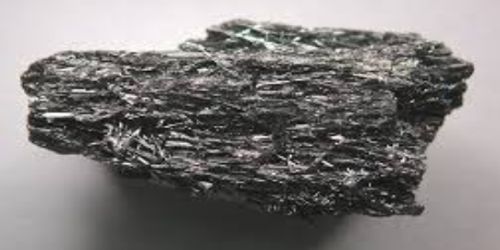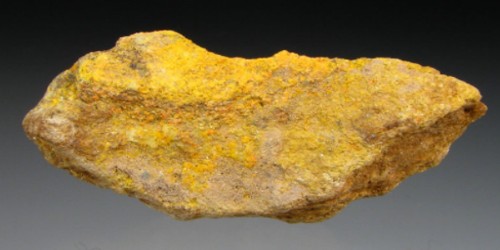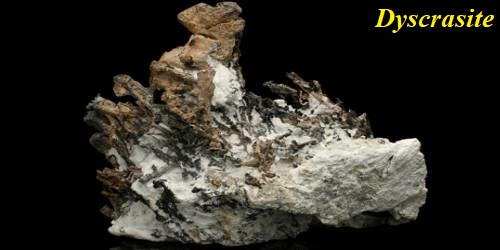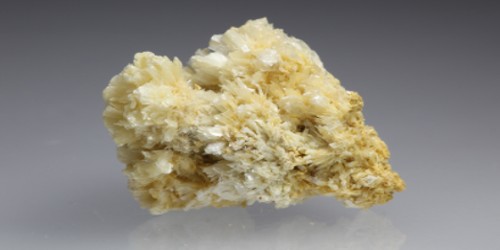Jamesonite is a sulfosalt mineral, a lead, iron, antimony sulfide with formula Pb4FeSb6S10. It is one of a few sulfide minerals that form fine acicular crystals that appear as hair-like fibers. It is a gray orthorhombic mineral consisting of a lead-antimony iron sulfide, having a metallic luster, and occurring in fibrous masses. It was named for Scottish mineralogist Robert Jameson (1774–1854). It was first identified in 1825 in Cornwall, England. It is also reported from South Dakota and Arkansas, US; Zacatecas, Mexico; and Romania. It forms as a late stage mineral in lead-silver-zinc veins that formed at low to medium temperatures.
Jamesonite is a sulfosalt, a segment of sulfides where the antimony acts more like a metal than a non-metal and occupies a position where it is bonded to sulfurs. It has been called feather ore and grey antimony.
General Information
- Category: Sulfosalt
- Formula: Pb4FeSb6S10
- Crystal system: Monoclinic
- Crystal class: Prismatic (2/m) (same H-M symbol)
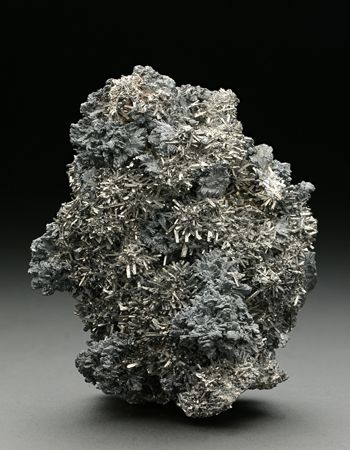
Fig: Jamesonite
Properties
With the addition of manganese, it forms a series with benavidesite. It is a dark grey metallic mineral which forms acicular prismatic monoclinic crystals. It is soft with a Mohs hardness of 2.5 and has a specific gravity of 5.5 – 5.6. It is one of the few sulfide minerals to form fibrous or needle-like crystals.
- Color: gray-black
- Cleavage: {001} good; also possibly {010} and {120}
- Mohs scale hardness: 2.5
- Luster: metallic
- Streak: gray-black
- Diaphaneity: opaque
- Specific gravity: 5.63
Occurrence: Typically a late-stage hydrothermal mineral in Pb–Ag–Zn veins formed at low to medium temperatures. It can also form large prismatic crystals similar to stibnite with which it can be associated. It is usually found in low to moderate temperature hydrothermal deposits.
It is a relatively common mineral with numerous localities including in England, Germany, the Czech Republic, Romania, Bolivia, Mexico, the United States, and China, which are all known for rich material.
Association: Other lead sulfosalts, pyrite, sphalerite, galena, tetrahedrite, stibnite, quartz, siderite, calcite, dolomite, rhodochrosite.
Information Source:
